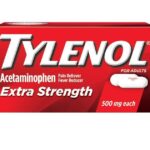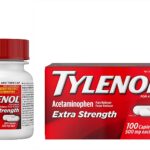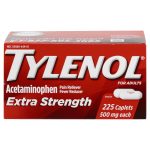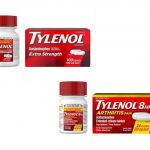How Often Can You Take Tylenol (Acetaminophen)
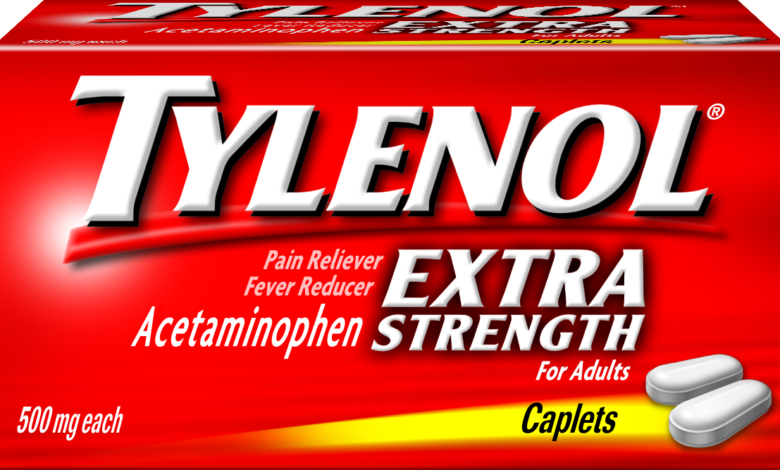
According to available data, the total number of deaths caused by conventional medicine is an astounding 783,936 per year, at a cost of $282 billion dollars. Medicines are generally safe when used as prescribed or as directed on the label, but there are risks in taking any medicine.
According to the CDC, each year in the United States, adverse drug events harm resulting from medication use cause more than one million visits to hospital emergency departments. Learning about medication safety can reduce and even prevent the risk of harm for you and your loved ones.
What is Tylenol?
Tylenol is a brand of (Acetaminophen), a well known over-the-counter (OTC) medication used as pain reliever and fever reducer. Acetaminophen is an ingredient also found in many OTC and prescription medicines for both adults and children.
Acetaminophen has received much public attention as a cause of liver damage when more than the recommended amount is taken. In 2011, the Acetaminophen Awareness Coalition (AAC) was formed to educate patients and consumers about the safe and effective use of acetaminophen. The coalition is made up of leading healthcare organizations, healthcare providers, and consumer organizations. The Food and Drug Administration (FDA), a member of the coalition, recently issued a statement reminding consumers about the dangers of taking too much Acetaminophen.
Some of the key points consumers should know about safe acetaminophen use include:
1. There is a large selection of both prescription and non-prescription medicines that contain acetaminophen in combination with other active ingredients. For example, many cold medicines contain acetaminophen for fever and pain, a decongestant to treat nasal stuffiness, and a cough medicine. Combining two or more products containing acetaminophen can be harmful.
2. Consumers need to know when acetaminophen is an ingredient in their medicines. Always read the active ingredients on the label before taking medicine.
- OTC products: The FDA makes sure that labels on OTC medicines list all the active ingredients. If you are unfamiliar with how to read an OTC label, visit: http://www.knowyourdose.org/how-read-your-label .
- Prescription medicine: Because of limited space on prescription labels, an abbreviation for acetaminophen, APAP, is often used instead. APAP stands for N-acetyl-p-aminophenol, a chemical name for acetaminophen. For example, the pain reliever Percocet contains oxycodone (a narcotic) and acetaminophen. A prescription for Percocet dispensed using a generic drug often has a label on the bottle that says “oxycodone and APAP.” If you are unfamiliar with how to read a prescription label, visit: http://www.knowyourdose.org/how-read-your-label.
3. Familiarize yourself with the recommended daily dosage of acetaminophen. Taking too much can lead to severe liver damage.
- Adults: The current maximum recommended adult dose is 4,000 milligrams per day. Depending on the medicine you are taking, each pill or liquid dose of acetaminophen may vary. Carefully read the label to determine how much acetaminophen you are taking in each dose. Follow the dosing schedule as directed on the medication label. For example, do not take a dose sooner than recommended.
- Children ages two years and up: The recommended dosage of acetaminophen in children two years and older depends on the child’s weight. OTC package labels will provide recommendations by both the age and weight of your child. However, to get the most accurate dose, it’s best to know your child’s current weight. The maximum dosing should not exceed five doses in 24 hours.
- Children ages two and younger: Currently, OTC products containing acetaminophen do not include dosing instructions for children less than two. Parents are instructed to call their physician for dosing instruction.
4. Be aware that the maximum amount of acetaminophen that can be safely ingested may not be the same for every person. If you have a history of liver disease, drink more than 3 alcoholic beverages per day, or take other medications that can affect the liver, always discuss with your physician what the safest dose of acetaminophen is for you.
You can learn more about acetaminophen at KnowYourDose.org, where you can get tips on reading over-the-counter and prescription labels and view a list of common medicines that contain acetaminophen.
Taking too much acetaminophen can cause liver damage, sometimes serious enough to require liver transplantation or cause death. You might accidentally take too much acetaminophen if you do not follow the directions on the prescription or package label carefully, or if you take more than one product that contains acetaminophen.
How Often Can You Take Tylenol
It is generally recommended that adults should not take more than 4000 milligrams of acetaminophen (the active ingredient in Tylenol) per day. This can be divided into doses of 1000 milligrams every 6 hours, or 650 milligrams every 4 hours. However, it is always best to follow the instructions on the packaging or as directed by your healthcare provider, as dosing instructions may vary depending on the formulation and strength of the medication.
It is also important to note that taking too much acetaminophen can be harmful to the liver, and can lead to liver damage or even liver failure. So, it is important to not exceed the recommended daily dose of acetaminophen and to avoid combining Tylenol with other medications that contain acetaminophen. If you have any questions about the appropriate dose or frequency of Tylenol, you should consult your healthcare provider.
General Tylenol (Acetaminophen) Information
To be sure that you take acetaminophen safely, you should
- not take more than one product that contains acetaminophen at a time. Read the labels of all the prescription and nonprescription medications you are taking to see if they contain acetaminophen. Be aware that abbreviations such as APAP, AC, Acetaminophen, Acetaminoph, Acetaminop, Acetamin, or Acetam. may be written on the label in place of the word acetaminophen. Ask your doctor or pharmacist if you don’t know if a medication that you are taking contains acetaminophen.
- take acetaminophen exactly as directed on the prescription or package label. Do not take more acetaminophen or take it more often than directed, even if you still have fever or pain. Ask your doctor or pharmacist if you do not know how much medication to take or how often to take your medication. Call your doctor if you still have pain or fever after taking your medication as directed.
- be aware that you should not take more than 4000 mg of acetaminophen per day. If you need to take more than one product that contains acetaminophen, it may be difficult for you to calculate the total amount of acetaminophen you are taking. Ask your doctor or pharmacist to help you.
- tell your doctor if you have or have ever had liver disease.
- not take acetaminophen if you drink three or more alcoholic drinks every day. Talk to your doctor about the safe use of alcohol while you are taking acetaminophen.
- stop taking your medication and call your doctor right away if you think you have taken too much acetaminophen, even if you feel well.
Talk to your pharmacist or doctor if you have questions about the safe use of acetaminophen or acetaminophen-containing products.

